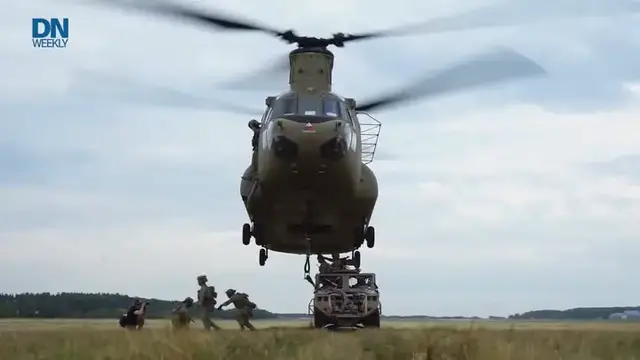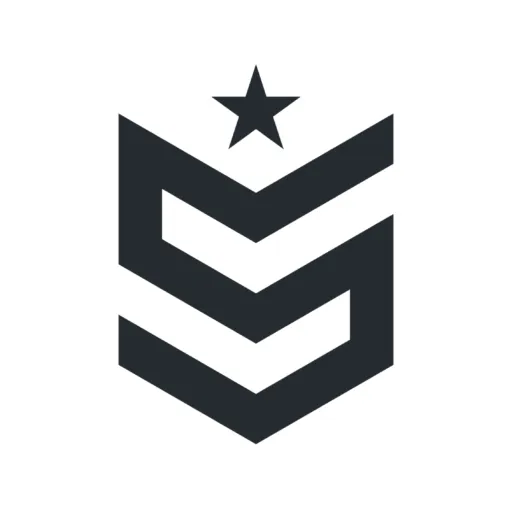We sit down with a panel of Army brass at AUSA 2025 to discuss the advantages and risks of accelerated aviation development.
Show More Show Less View Video Transcript
0:00
Welcome back to Defense News Weekly. The Army is evolving its aviation wing and looking to do it quickly
0:06
In our first panel from the 2025 AUSA conference, we sat down with some top Army leaders to discuss the advantages and the risks that come with accelerated development. Check it out
0:16
The last time I saw all of you together was in May at the Army Aviation Summit in Nashville
0:25
and it was right after the Army rolled out their Army Transformation Initiative memo
0:32
Lots of big muscle movements there and a lot of surprising and I think not so surprising decisions
0:38
So at Quad A, you said that the aviation branch was changing the way it's been doing business
0:44
So highlight just top level some of the ways that business is changing for aviation for the Army
0:50
There is a lot of change happening. I think you're going to hear some themes that we're going to talk about here that will seed what you're going to hear the rest of this week in terms of what we're doing
1:00
So you're going to hear a lot about acceleration, right? Acceleration, Ryan just covered just about everything I think I wanted to talk about
1:07
So great job there, Ryan. Acceleration doesn't necessarily just mean twice as far, twice as fast
1:12
Acceleration means how we're doing business. And so the Army leadership has been very aggressive in that regard, and industry is moving at pace with us
1:22
I saw General Sloser, and I was just talking to Ryan. I said, how are you doing? They said, they're busy
1:26
I said, that's a good answer. Like, you know, we are moving quickly to deliver capabilities to the warfighter
1:31
You're going to hear the term transformation over and over and over again. Jen just alluded to the fact that, you know, the Army rolled out its transformation initiative in the springtime
1:40
and that is fundamentally changing many things, but many processes as well
1:47
And so, you know, acceleration and speed do count. That's part of it
1:51
And then lethality You know everything that we are thinking about is about how to deliver a more capable formation a more capable soldier and the results that we want And specifically in aviation we talking about changing how we do flight school
2:06
We're changing a huge shift across all of the Army from manned to unmanned capability
2:14
It doesn't mean we're walking away from manned capability, as we're talking about with the MV-75
2:18
That's a huge program for us. So a lot of opportunity out there for us to think about how we're going to fight in this new environment of large-scale combat
2:29
I did want to jump right into accelerating, and you talked a lot about going quicker on the FLARA MV75 program
2:40
It's quite ambitious. So can you talk about where you are? Since May, we talked about the fact that you were going a lot quicker with building prototypes
2:51
and then concurrently also trying to get production aircraft a little quicker and testing as you go
2:59
There's a lot of risk in that. So talk about where you see some of the greatest risk in going quicker
3:04
now that you've had a little bit more time to evaluate. Yeah, happy to jump in there
3:09
And I won't steal all of Jeff Paquette's thunder. It's good to have your PM here with you because that way when you run out of details to share
3:16
He can share the details But what I would say is just the foundational elements that we started the program with
3:21
Those enable the foundation and the acceleration So when you think about the JMR program like Ryan talked about you think about the amount of open systems
3:30
Architecture and approach work that was done before even before we started bending any kind of metal whatsoever or putting code to paper
3:37
There's a lot of fundamental cornerstones in the program The JMR program was one
3:42
Mosul was another. And then as we looked forward into that, we looked at the right to repair, and we looked
3:47
at digital engineering and operationalizing that And so the team been able to do that And I think what I would offer as I hand it over to Jeff is that the scale that we need to do that at right the 300 suppliers at Tier 1 level
4:00
over 1,000 suppliers at Tier 2 and below, you have a lot of scale that you need to operate at
4:06
for a program of this magnitude, this size. So ensuring that the whole team is rowing together
4:11
and up to speed together is something I think that's changed this summer
4:15
I think this summer the entire team has leaned forward, keeping those same principles and the same building blocks there
4:21
And I think the team is doing some really great work. Thanks, sir
4:27
So one of the first things we did when we got that directive from Army senior leaders is we went to Bell and said
4:34
what are the things that you need to accelerate? So we sought input from the folks actually doing the work
4:43
And they provided that. Big, long list, right? Hundreds of things. And we sat and we talked about that at the executive level, not just Ryan and me, but the CEO, the PEO, and other aviation senior leaders
4:55
Most important was, okay, what can we take a little bit of risk in so that we can go faster but not get rid of all the goodness that we really, you know, consider to be the cornerstones of the program
5:09
General Phillips meant the right to repair. That, for us, was a non-negotiable, and we made sure the secretary understood that
5:15
MOSA was a non-negotiable. But things like the artifacts that we need to receive, maybe we can defer receiving the artifacts
5:23
And because Ryan mentioned how integrated we are down there, predominantly in DFW
5:28
because my team is there, and when they come back and say, hey, we're comfortable, they're taking the right approach, they're going the right direction
5:33
they may not get it all written down and submitted and then reviewed, that's the kind of things that we can defer down the road
5:40
As far as details go, sir, yes. A lot has happened in the past four months Thousands and thousands over 3 drawings engineering drawings released over 90 engineering released 5 purchase orders across a supply base of over 360 at this point
5:57
So that's real movement on the program because, as we know, Bell doesn't build this alone
6:02
There's probably a lot of the suppliers in this room right here. They're certainly here at this convention
6:07
And they're a critical part to the program because Bell's the design. They build the fuselage
6:12
They build a lot of the big structures, but a lot of the things that make this work are out there somewhere
6:16
Small companies, big companies, some of you have heard, some that you haven't heard
6:21
And like Ryan said, I've been all over the country meeting with companies that make ball bearings
6:25
or that make castings and forgings or that make big tools the size of this room
6:30
that facilitate making this incredibly complex machine. So we've seen real movement on the program
6:39
Of course, it starts with money. Can we get the money in place so that we can actually go faster
6:44
Some of it is bringing money to the left because we were going to do it later
6:48
and now we're going to do it earlier. And you mentioned risk. We don't see this as taking an incredible amount of risk
6:55
When you are building prototypes and then you go to test and you are also building production aircraft, we said, okay, what would the risks be
7:04
The risk would be that you would be building production aircraft, then you find things wrong in test
7:08
And then we said, Bell, how can you make us feel comfortable? How can you make me feel comfortable that you're going to be building aircraft while you're in test
7:15
And we've come to some agreements at the executive level that say, look, here's the pricing we want to do
7:19
and here's what we need you to do once we build aircraft. If they're not where they need to be, what are you going to do to get them fielded
7:25
So we have all that in place, and that's how we burn down that risk
7:30
We don't see it as risky as in the past. Some programs have done developmental tests and operational tests at the same time
7:36
We're not doing that. developmental test, production alongside, and then operational test when the right risk authority
7:42
is comfortable putting that aircraft in the air with operators
#news



